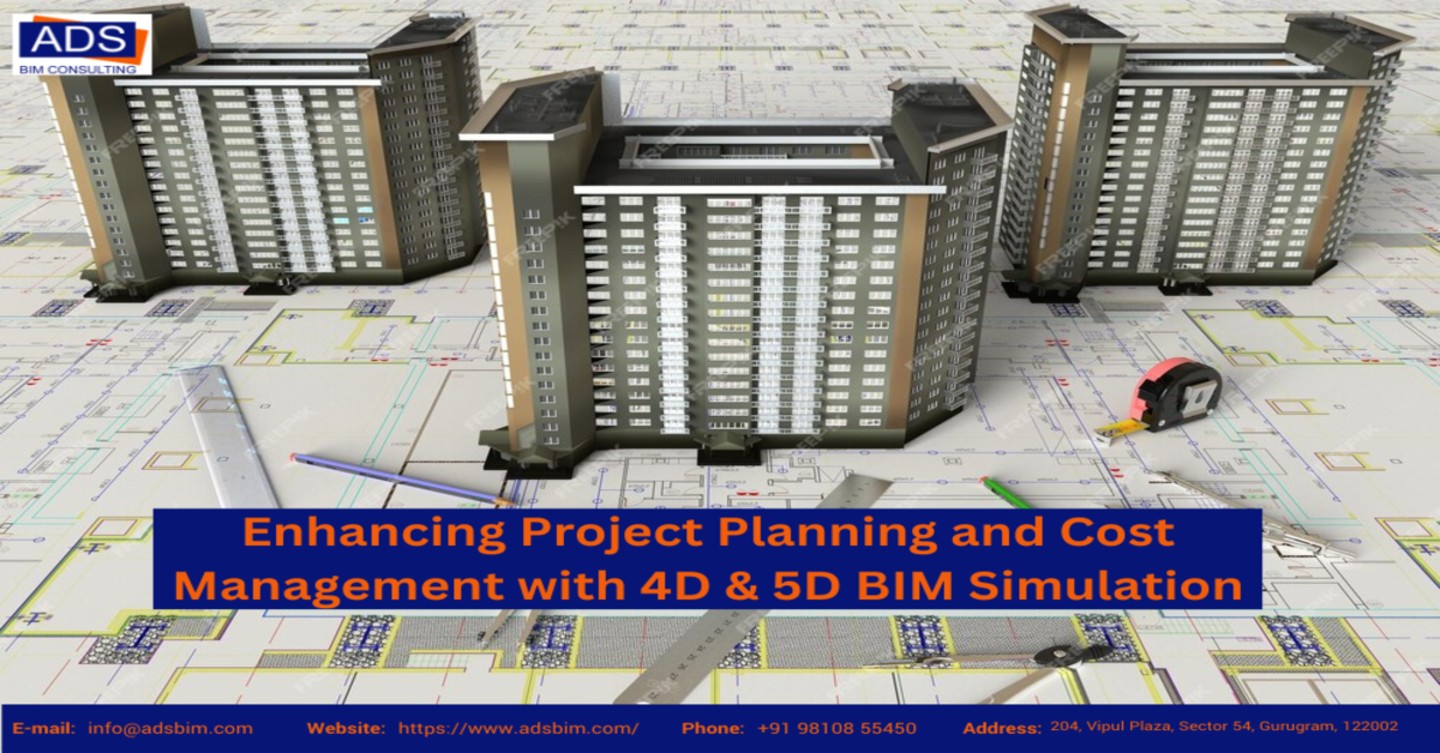The Power of 4D and 5D BIM for Improved Project Planning and Cost Management
 harshu sharma
harshu sharma
Introduction
In today’s fast-paced construction industry, staying on track with timelines and budgets is a constant challenge. Fortunately, 4D and 5D BIM Simulation are transforming the architecture, engineering, and construction (AEC) sector by improving project visualization, enhancing coordination, and ensuring accurate cost management. By integrating time (4D) and cost (5D) data into 3D BIM models, teams gain powerful insights that streamline workflows and support better decision-making.
What is 4D BIM Simulation?
4D BIM Simulation integrates scheduling data into 3D BIM models to create a timeline-based visual representation of the construction process. This method helps project managers visualize each stage of the project, predict potential issues, and optimize scheduling.
Benefits of 4D BIM Simulation
Enhanced Project Visualization: See each construction phase in detail with accurate timelines.
Improved Scheduling: Plan resource allocation efficiently and minimize delays.
Clash Detection: Identify scheduling conflicts early to reduce costly rework.
Resource Management: Optimize labor, materials, and equipment planning by aligning resources with the construction sequence.
What is 5D BIM Simulation?
5D BIM Simulation integrates cost data into 3D and 4D models, allowing project teams to track expenses throughout the entire project lifecycle. Real-time cost updates ensure accurate forecasting and budget control.
Benefits of 5D BIM Simulation
Accurate Cost Estimation: Dynamic updates provide precise budgeting insights.
Budget Control: Teams can track costs during the project lifecycle to mitigate risks and prevent budget overruns.
Informed Decision-Making: Comparing costs across design alternatives enables cost-effective solutions.
Why Combine 4D and 5D BIM Simulation?
Combining 4D and 5D BIM Simulation provides a complete overview of project timelines and costs, ensuring:
Efficient task sequencing.
Proactive budget management with real-time cost updates.
Clear communication through visual project timelines.
This combined approach reduces costly errors, fosters collaboration, and ensures projects finish on time and within budget.
Real-World Applications of 4D and 5D BIM Simulation
1. Large-Scale Infrastructure Projects
- Highways, airports, and rail systems benefit from 4D BIM by sequencing complex tasks and improving coordination.
2. High-Rise Buildings
- 5D BIM ensures accurate material cost tracking for efficient budget management in skyscraper projects.
3. Healthcare Facilities
- Integrating both 4D and 5D BIM ensures medical equipment placement, construction sequencing, and budget control align perfectly for optimal results.
Key Advantages for Construction Teams
Improved Risk Management: Visualizing risks in timelines helps prevent costly surprises.
Enhanced Collaboration: Interactive visual models improve communication among stakeholders.
Streamlined Communication: Visual timelines simplify complex project details, boosting stakeholder confidence.
Implementing 4D and 5D BIM Simulation in Your Projects
To successfully implement 4D and 5D BIM Simulation:
Choose the Right BIM Software: Autodesk Navisworks, Synchro, and Revit support advanced 4D and 5D features.
Train Your Team: Ensure staff understand simulation tools to interpret models effectively.
Work with BIM Experts: Collaborate with experienced professionals like ADS BIM for customized solutions.
Internal Links for Further Learning
Discover Our Digital Prefabrication Solutions
Learn About Clash Detection and Coordination
Understand the Benefits of Scan to BIM
Find Out More About Facilities Management
FAQs
1. What is the key difference between 4D and 5D BIM?
4D BIM integrates scheduling data, while 5D BIM incorporates cost details for accurate budgeting.
2. How does 4D BIM improve project planning?
It allows project teams to visualize construction sequences, identify delays, and manage resources efficiently.
3. Can 5D BIM help control project costs?
Yes, 5D BIM provides real-time budget updates to help managers track costs accurately.
4. What industries benefit from 4D and 5D BIM Simulation?
Construction, real estate development, healthcare, and infrastructure sectors greatly benefit from these simulations.
5. How can my company implement 4D and 5D BIM Simulation?
Collaborating with BIM specialists like ADS BIM ensures seamless implementation and tailored solutions for your projects.
Conclusion
By leveraging 4D and 5D BIM Simulation, construction teams can minimize risks, improve coordination, and achieve greater project efficiency. For customized BIM solutions, trust ADS BIM to deliver advanced strategies that ensure your project's success.
📞 Contact us at harshu@adsbim.biz
🌍 Visit our website → https://www.adsbim.com
#4DBIMSimulation #5DBIMSimulation #ConstructionPlanning #CostManagement #BIMServices #ProjectManagement #DigitalConstruction #BuildingDesign #ConstructionTechnology #ADSBIM
·
Subscribe to my newsletter
Read articles from harshu sharma directly inside your inbox. Subscribe to the newsletter, and don't miss out.
Written by

harshu sharma
harshu sharma
Build with ADS BIM Consulting Services Transform your projects with ADS BIM Consulting. Access expert solutions and advanced tools to streamline design and construction.